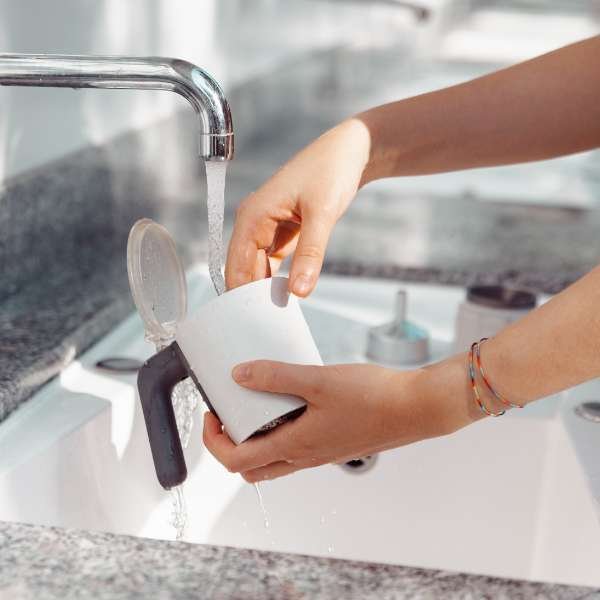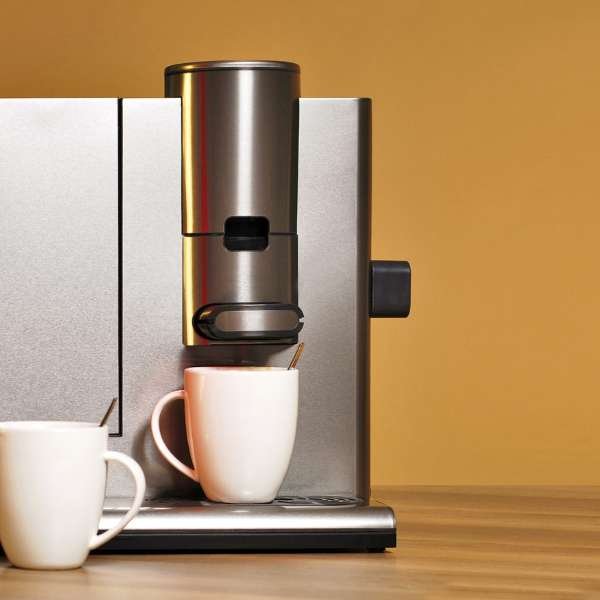A Bonavita coffee maker is a relied on companion for coffee fans, however to revel in every cup to its fullest, you want to understand how to clean your Bonavita espresso maker nicely. Over time, coffee oils, mineral deposits, and residue can increase, affecting both the taste of your brew and the overall performance of your device. Regular cleaning will keep your coffee tasting clean and ensure your Bonavita stays in great condition. This guide will take you thru every step to hold your coffee maker, so that you can experience always rich, flavorful espresso every day.
Why Regular Cleaning is Essential for Great Coffee Flavor

Every espresso lover is aware of that taste is paramount. Routine cleaning of your Bonavita guarantees that oils and residue don’t cling to the elements and contaminate the fresh brew. These lingering elements create an unsightly bitterness, dulling the sturdy notes that ought to be dancing in your tastebuds. Cleanliness, past flavor, additionally approach sturdiness. By banishing buildup, you permit your machine to characteristic at its height, serving you cup after ideal cup.
How often to clean your Bonavita coffee maker?

The frequency depends on how a lot you love espresso. Daily or after every use, clean the carafe, clear out basket, and any exterior surfaces that acquire espresso splatters. A extra thorough cleansing, consisting of descaling, ought to occur each month or , specially if you’re a common brewer. Those handling hard water will want to be greater diligent, as the mineral deposits can accumulate quick, making routine descaling crucial.
Understanding the Parts of a Bonavita Coffee Maker
Maintaining your Bonavita becomes straightforward when you recognize which parts need attention. The carafe, filter basket, water reservoir, showerhead, and control panel all accumulate residue.. Each component requires a unique cleaning method, ensuring that oils and deposits don’t linger and taint the taste.
Essential Supplies for Cleaning Your Bonavita Coffee Maker

A few simple items will make cleaning a breeze: vinegar or descaling solution, mild dish soap, a soft cloth, baking soda, and a gentle brush (a toothbrush works wonders). These supplies tackle everything from stubborn stains to mineral buildup, leaving your machine fresh and spotless.
Preparing Your Coffee Maker for a Deep Clean
Proper preparation means thorough results. Begin by unplugging your Bonavita to prevent accidents. If it’s recently brewed coffee, let it cool. Disassemble every removable part, ensuring you have clear access to those hidden areas where oils and grounds love to hide.
Unplugging and Disassembling the Coffee Maker Safely
Start by unplugging to ensure safety. Carefully detach the carafe, filter basket, and any other removable components. This not only makes cleaning safer but allows you to reach each component individually, ensuring nothing is overlooked.
How to Remove and Clean the Carafe and Filter Basket

These parts experience the most contact with coffee oils and grounds. Use warm, soapy water to wash each thoroughly, and rinse well to avoid any lingering soap residue. For the carafe’s stubborn stains, a sprinkle of baking soda and a gentle scrub can work wonders.
Cleaning the Showerhead and Brew Basket
These components distribute water evenly over coffee grounds, but they can clog easily over time. Rinse with water and gently scrub using a brush to keep them clean, which maintains the machine’s optimal brewing capabilities.
How to Clean Bonavita Coffee Maker’s Water Reservoir

The water reservoir, a humble yet vital part, can trap mineral deposits, affecting both the flavor and performance. A deep clean every few weeks prevents these deposits from tarnishing your coffee and straining the machine.
Why Cleaning the Water Reservoir is Important
Hard water leaves mineral deposits that slowly accumulate in the reservoir, affecting the water quality and eventually clogging heating elements. This leads to a shorter machine lifespan and, more importantly, subpar espresso.
Steps for Removing and Rinsing the Reservoir
Empty any remaining water, fill with a mild detergent and water mixture, scrub gently, then rinse thoroughly. Avoid abrasive sponges; they can scratch the surface and invite further build-up.
Using Vinegar Solution for Deep Cleaning the Water Reservoir

Vinegar acts as a natural descaler. Fill the reservoir with a 1:1 mix of vinegar and water, let it sit for 20-30 minutes, then rinse multiple times. This powerful solution dissolves mineral build-up, though it’s crucial to rinse thoroughly to prevent a vinegar aftertaste.
Descaling Your Bonavita Coffee Maker to Remove Hard Water Buildup
Descaling is the process of removing mineral deposits from internal components, essential for areas with hard water. This ritual keeps your Bonavita performing well and ensures the full, fresh flavor of each brew.
Signs That Your Coffee Maker Needs Descaling
Your coffee tastes slightly off, if brewing slows down, or if you see white residue, it’s time to descale. These symptoms are evidence of mineral buildup that’s compromising the machine’s functionality.
Step-by-Step Guide to Descaling with Vinegar or Commercial Cleaner

Fill the reservoir with equal parts vinegar and water, run a brew cycle without espresso, and then complete several cycles with clean water. For extreme buildup, a commercial descaler works faster and more effectively. Once done, rinse thoroughly to remove any residual acid.
Rinsing After Descaling: Why It’s Crucial
Proper rinsing clears any acidic residue left after descaling, preventing it from impacting the coffee’s taste. Run several cycles with fresh water to ensure all traces of the cleaner or vinegar are gone.
Cleaning the Coffee Maker’s Exterior and Control Panel
While it doesn’t touch the coffee, a clean exterior contributes to the longevity of your espresso maker. Dust, oils, and coffee splatters can gradually dull its appearance and even clog buttons if left uncleaned.
Tips for a Spot-Free Exterior Finish

Clean the surface using a soft damp cloth and mild detergent. For persistent spots, try a dab of vinegar on the cloth. This gentle approach keeps the machine looking pristine without causing damage.
How to Safely Clean the Control Panel and Power Cord
Avoid soaking the control panel. Wipe away fingerprints and dust with a slightly damp cloth. Periodically wipe down the power cord as well to prevent dust buildup, which can eventually become a fire hazard.
Cleaning the Carafe: Removing Coffee Stains and Odors
The carafe holds your coffee, meaning it often retains lingering odors and stains from previous brews. Regular cleaning keeps it fresh, ensuring that each pot tastes as it should.
How to Clean Glass vs. Stainless Steel Carafes

Glass carafes require mild soap and a sponge, thoroughly rinsing after. Stainless steel carafes may need a baking soda scrub to eliminate persistent odors and remove any lingering stains.
Using Baking Soda to Remove Persistent Stains
Baking soda’s gentle abrasiveness is ideal for tough stains. Sprinkle some in the carafe, add water to form a paste, and gently scrub to lift discoloration without scratching.
How to Maintain the Carafe’s Freshness Between Uses

Rinse the carafe immediately after each use and let it air dry. This simple step prevents coffee oils from settling, keeping your next pot tasting as fresh as the first.
Drying and Reassembling Your Bonavita Coffee Maker
Complete drying is key to avoiding mold or bacteria. Before reassembling, make sure each component is fully dry to maintain both cleanliness and hygiene.
Why Drying Each Part Thoroughly Matters

Moisture can lead to mold and mildew, which not only affects taste but is also unhygienic. Allowing parts to air dry or using a clean towel ensures there’s no residual moisture.
How to Reassemble Your Coffee Maker Without Missing a Step
Carefully place each piece back, securing it firmly to prevent leaks. A properly reassembled espresso maker functions better and ensures you’re set for the perfect brew.
Keeping the Bonavita Coffee Maker Clean Daily

Daily maintenance minimizes the need for frequent deep cleans, making upkeep easier over time. These simple steps will add years to your coffee maker’s life.
Simple Tips for Daily Rinsing and Wiping
Rinse the carafe and filter basket thoroughly after every use. A quick wipe-down of the exterior prevents dust and coffee splashes from accumulating.
How to Prevent Coffee Oil Buildup with Quick Cleaning
Daily wiping of the carafe and filter basket prevents oils from setting in, keeping your Bonavita tasting fresh and free from the bitterness caused by old coffee residue.
Best Practices to Prevent Scale and Buildup

Adopting some proactive practices helps minimize mineral buildup, extending the time between descalings and ensuring a cleaner coffee experience.
How Water Quality Impacts Cleaning Frequency
Hard water leaves more mineral deposits. If you use unfiltered tap water, consider descaling more frequently or using filtered water to ease the burden on your machine.
Using Filtered Water to Reduce Mineral Deposits

Filtered water lacks the minerals found in hard water, reducing the rate of buildup and making regular maintenance easier.
DIY Cleaning Solutions vs. Commercial Cleaners: Pros and Cons
Both natural and commercial cleaners have their place. Vinegar is a classic, gentle descaler, while commercial cleaners are effective at tackling heavy buildup in a short time.
Benefits of Natural Cleaners like Vinegar and Baking Soda

Clean a coffee maker no a vinegar, natural cleaners like lemon juice and baking soda provide an effective and eco-friendly opportunity. These substances are without problems to be had and safe in your coffee maker, leaving no harsh chemical residue at the back of. Lemon juice, with its herbal acidity, enables wreck down mineral deposits and eliminates lingering odors, making sure your coffee tastes clean and natural. Baking soda, on the other hand, is a mild abrasive that tackles stubborn stains and gets rid of buildup while also neutralizing odors. These natural cleaners aren’t best fee-effective however additionally protect your coffee maker’s additives from the capacity corrosive results of harsh chemical substances. By opting for those options, you could hold your device’s performance and increase its lifespan, all at the same time as maintaining your cleansing ordinary secure and environmentally conscious.
When to Use Specialized Coffee Maker Cleaners
For severe buildup, commercial cleaners are worth considering. They’re formulated to dissolve minerals efficiently, though they should always be followed by thorough rinsing.
How to Troubleshoot Common Issues After Cleaning

Occasionally, cleaning introduces minor issues such as altered taste or minor functional glitches. Knowing how to troubleshoot these ensures your coffee maker performs at its best.
What to Do if Your Coffee Maker Tastes Like Vinegar
Vinegar lingers, run additional water cycles or add a pinch of baking soda to neutralize any remaining acidity.
Fixing Common Problems like Leaks or Slow Brewing
Leaks may occur if parts aren’t seated properly. Double-check that seals are tight and that everything is correctly aligned. Slow brewing may indicate a clog in the showerhead or filter basket.
Maintaining Your Bonavita Coffee Maker Long-Term

Consistency is the secret to a well-maintained espresso maker. With proper care, your Bonavita will deliver countless fresh, delicious cups.
Creating a Cleaning Schedule for Consistent Results
Establish daily, weekly, and monthly routines. Regularity prevents buildup, simplifies each cleaning session, and ensures that your coffee remains pure.
Why Proper Storage and Handling Matters
Store your Bonavita in a clean, dry spot, away from steam or grease. Proper storage protects its parts and prevents unnecessary exposure to dust or moisture.
Conclusion
A clean coffee maker is your ticket to consistently wonderful coffee. By following these steps, you’ll protect your machine’s integrity and enjoy that fresh, vibrant flavor that only a spotless Bonavita can deliver. Enjoy every sip!

